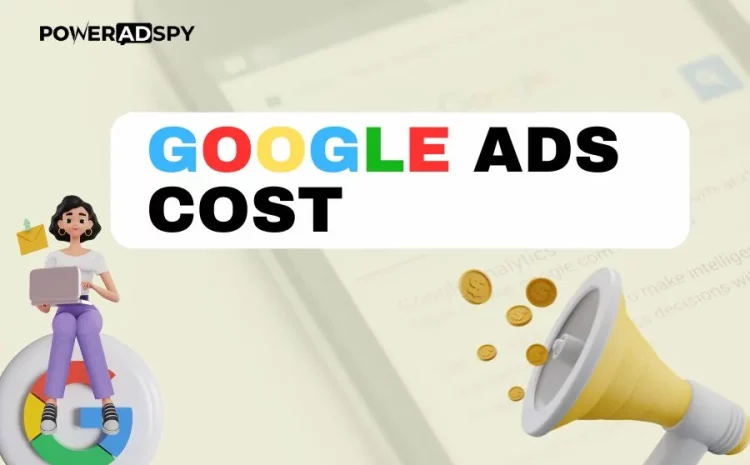Google Ads Cost Made Simple: What to Expect
Running ads on Google is one of the fastest ways to bring traffic, leads, and sales to your business, but it can also get expensive fast if you don’t understand how the system works. That’s why knowing the Google Ads cost before diving in is not just helpful, it’s essential.
In 2025, Google Ads remains one of the top digital advertising platforms, used by startups, local businesses, and global brands alike. But there’s one question almost everyone asks before getting started: How much do Google Ads cost? The answer depends on a variety of factors, from your industry to your competition to how well your ads are written.
This guide will break down everything you need to know about ad cost in the simplest way possible. You’ll learn what affects your budget, how to spend smarter, what different types of campaigns cost, and how to get the best bang for your buck. And by the end, you’ll know exactly what to expect without getting lost in jargon.
You can also Listen to our Podcast here,
What Is Google Ads Cost? (And Why It’s Not One-Size-Fits-All)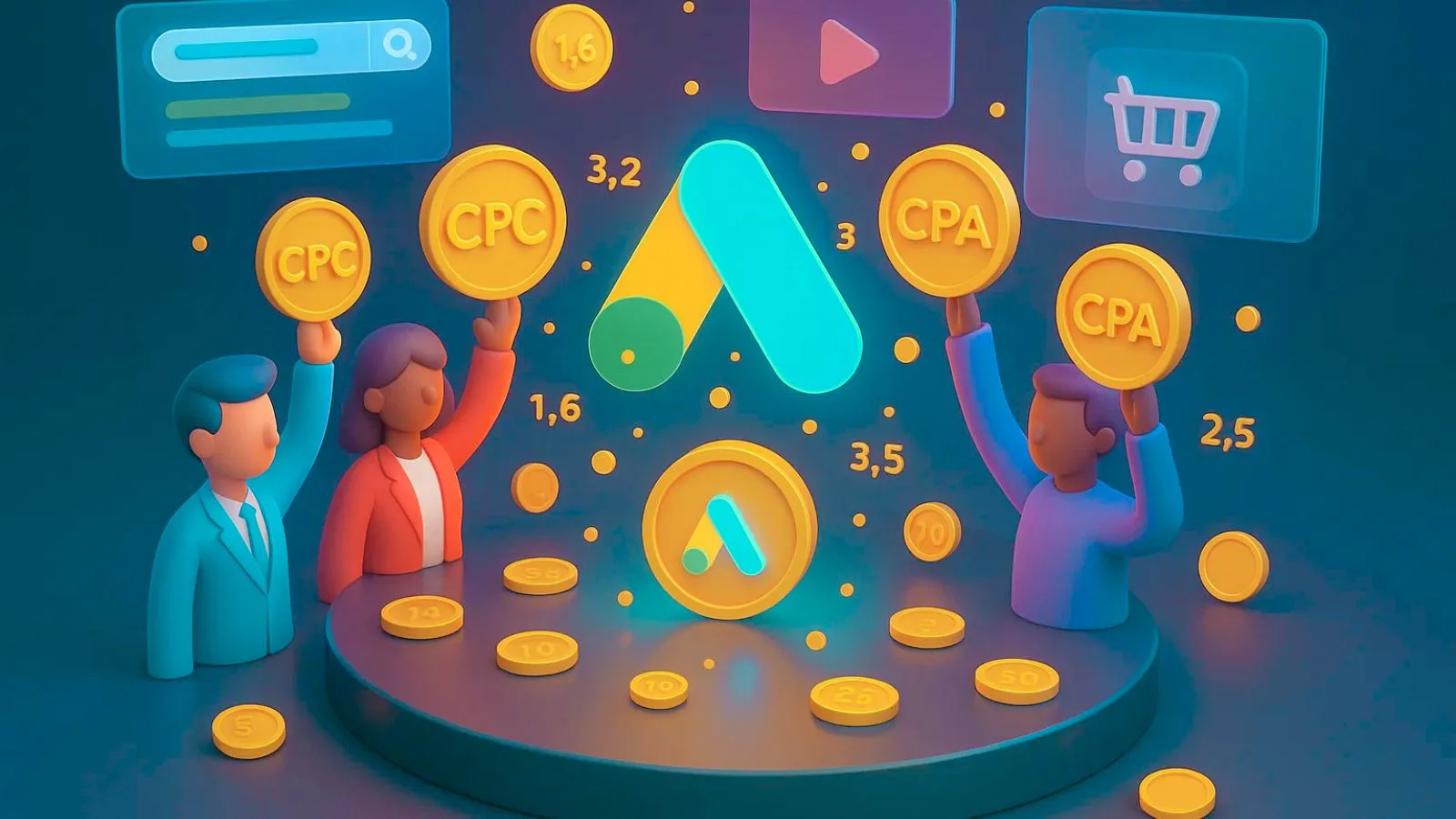
Let’s start with the basics: Google Ads cost is the amount you pay to have your ads shown on Google’s network, which includes Search, YouTube, Display, Shopping, and more. But here’s the thing: there’s no fixed price. The cost varies widely depending on what you’re promoting, who you’re targeting, and how well your campaign is set up.
Google Ads is based on a pay-per-click system, meaning you’re charged when someone interacts with your ad. That means you only pay when someone clicks your ad. Sounds fair, right? But not all clicks are priced equally.
Some industries (like legal or finance) can pay ₹200–₹500 or more per click, while others (like eCommerce or lifestyle blogs) might only pay ₹10–₹30. That variation leaves many marketers wondering: how much does Google Ads cost, really?
To understand this better, it helps to know the different pricing models:
CPC (Cost Per Click): You only pay when someone clicks on your ad.
CPM (Cost Per Mille): You pay for every 1,000 times your ad is shown, great for your brand awareness.
CPA (Cost Per Acquisition): You’re charged only when someone takes a specific action, like signing up or making a purchase.
So, when we talk about Google Ads cost, we’re not talking about a single price tag; it’s a flexible range shaped by your ad settings, audience, and competition. The better your targeting and ad quality, the less you’ll likely pay per result. It works much like social media advertising cost, where pricing also shifts based on audience targeting, competition, and campaign goals.
Now that we’ve covered the basics, let’s dive deeper into what drives your costs up or down.
Also read,
What Affects Google Ads Cost in 2025?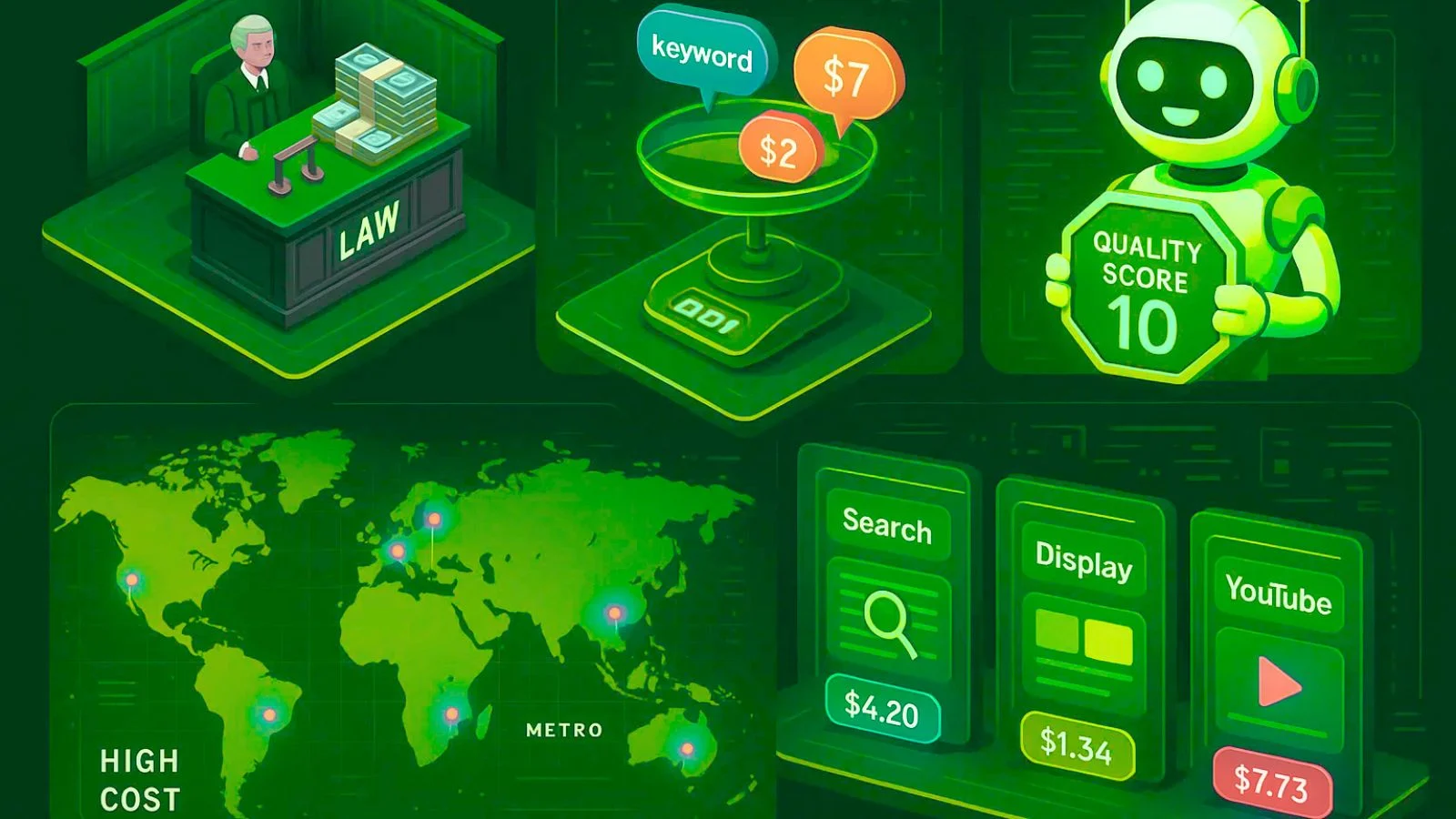
If you’ve ever asked, “How much do Google Ads cost?”, the real answer is: it depends. Your Ad cost in 2025 is influenced by several key factors that determine how competitive your ad space is and how efficiently your campaign runs.
Let’s look at the biggest cost drivers:
1. Industry Competition
Some industries are just more expensive. For example, law firms, insurance companies, and software businesses often face high Ad cost per click, sometimes reaching hundreds of rupees or more, because of intense competition. On the other hand, local businesses or niche eCommerce brands might get cheaper clicks.
2. Target Keywords
Not all keywords are created equal. High-volume, high-intent keywords usually come with a higher price tag. The more businesses bid on a specific keyword, the more your Ad cost will rise. That’s why using keyword research tools or a Google Ads cost calculator can help you plan smarter.
3. Ad Quality Score
Google rewards good ads. If your ad is relevant, well-written, and links to a high-quality landing page, you’ll get a better Quality Score. A high score means lower cost per click and better ad placement, directly lowering your overall Ad cost.
4. Location and Demographics
Targeting people in expensive metro areas or high-income groups can increase your costs. A click from someone in Mumbai or New York might be more expensive than one from a smaller town, because advertisers are fighting harder for that audience.
5. Ad Format and Campaign Type
Different types of campaigns (Search, Display, YouTube, etc.) come with different pricing structures. For instance, Search campaigns usually have a higher Google Ads cost than Display campaigns, but they also tend to convert better.
With these factors in mind, let’s break down what you can expect to pay across different campaign types. And don’t forget, using Google Ads coupons can give you a cost-saving boost when starting new campaigns, especially if you’re testing strategies.
Also read,
Google Ads Coupons: What They Are, Who Gets Them, And How To Use Them Easily
Google Ads Cost Breakdown by Campaign Type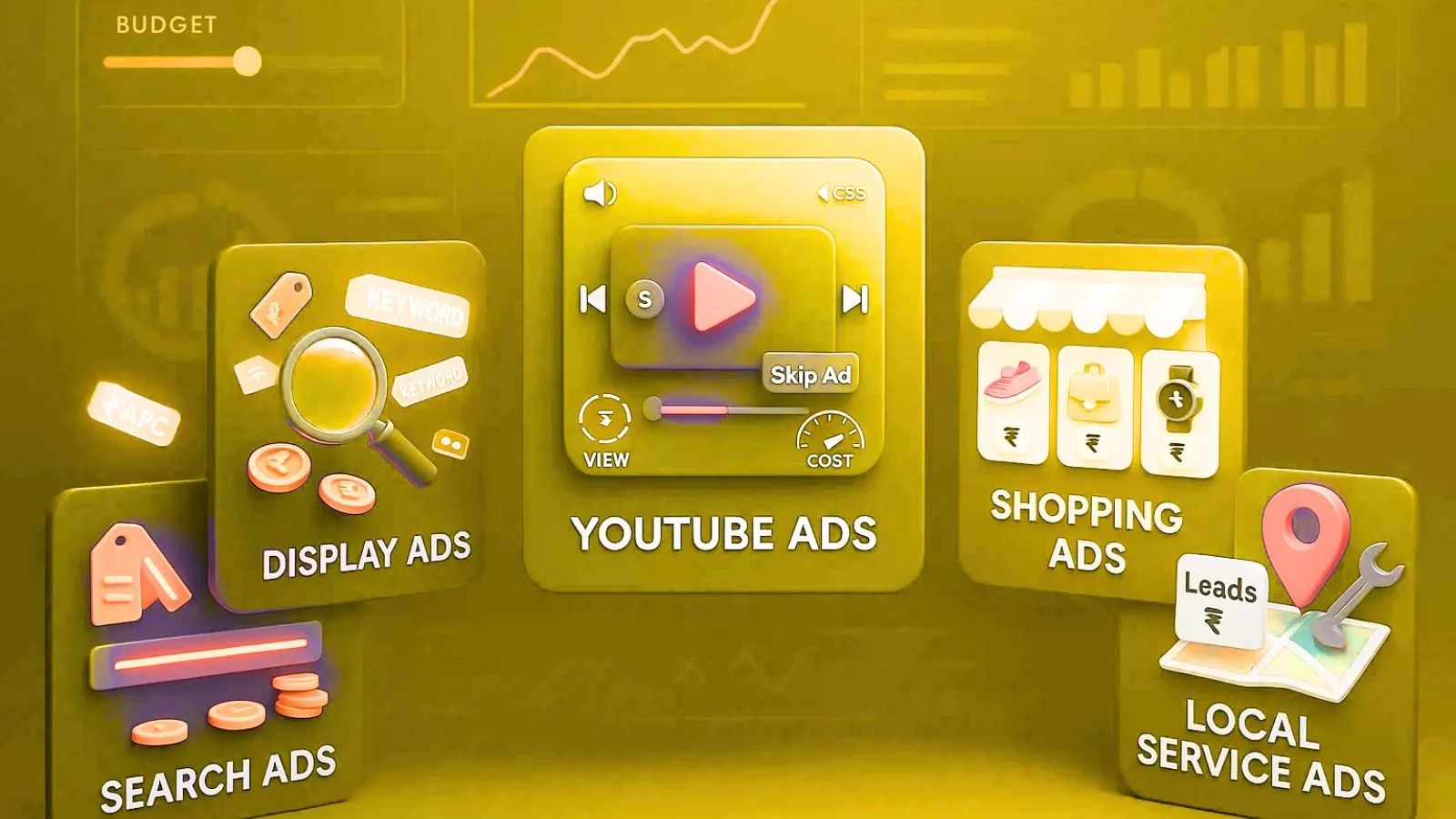
Understanding the different types of Google Ads campaigns—and how much they cost—can help you plan a smarter budget. Here’s what you can expect in 2025:
- Search Ads
These are the text ads that show up at the top of Google search results. Since they capture high-intent traffic, they’re also among the most expensive. In 2025, the average cost per click (CPC) is around $2.50 to $6.50, with some competitive industries averaging $5+ per click. Best for direct conversions and lead generation. - Display Ads
Visual banners that appear across websites in the Google Display Network. They’re much cheaper, with an average CPC of about $0.50 to $1.50 (the global benchmark is roughly $0.63). Great for brand awareness and remarketing, but conversion rates are typically lower. - YouTube Ads
Video ads that run before, during, or after YouTube videos. Instead of paying per click, you often pay per view (CPV) or per thousand impressions (CPM). In 2025, the average CPV is only around $0.02–$0.03, while CPM averages about $3.50. These are excellent for storytelling and mass reach. - Shopping Ads
These show product listings with images, prices, and store names directly in Google Search. On average, Shopping Ads cost around $0.60–$0.70 per click, making them very cost-effective for e-commerce, though competition can drive up costs in popular niches. - Local Service Ads
Instead of paying per click, you pay per lead. In 2025, costs vary widely depending on the service, but leads can easily run into tens to hundreds of dollars in competitive niches (like law or finance). While more expensive upfront, they often deliver better ROI if the leads convert.
Google Ads Cost by Industry (2025 Data Snapshot)
Still wondering how much Ad costs in your niche? The truth is, some industries consistently pay more than others, mostly due to competition and the value of a single lead or customer.
Here’s a snapshot of Google Ads cost by industry in 2025:
| Industry | Avg. CPC (₹) | Notes |
| Legal / Attorneys & Legal Services | $6.75 | One of the highest CPCs because the lifetime value of a client is very high. |
| Finance & Insurance | $3.44 | Competitive niche with many advertisers. |
| Healthcare | 2.62 | Especially high for private clinics and specialist services |
| eCommerce | $1.16 | Lower CPC, but it depends on the product niche |
| Education | $2.40 | Courses, online classes, and certifications are growing fast |
| Tech/SaaS | $3.80 | B2B tools face steep competition, especially in software |
| Real Estate | $2.37 | High-ticket leads but expensive to acquire |
| Travel & Hospitality | $1.53 | Seasonal spikes can dramatically affect Google Ads cost |
Pro Tip: Use a Google Ads cost calculator to get an estimate based on your keywords, targeting, and location.
Even if your industry falls into a “high-cost” category, that doesn’t mean you have to overspend. With smart targeting and the right ad structure, you can still stay within budget.
And this is where monitoring and budget control become critical.
Budgeting Smart: How to Control Google Ads Cost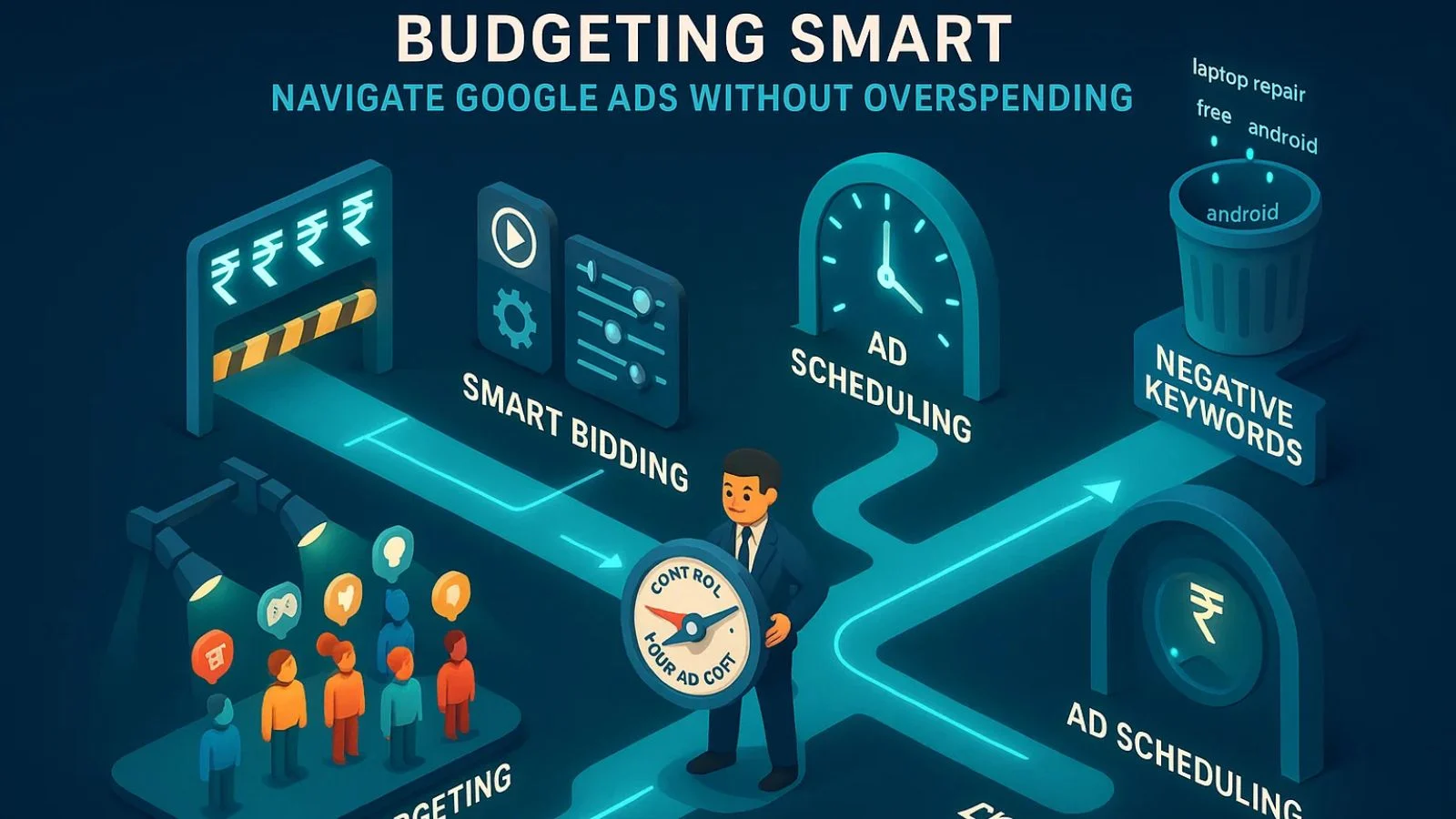
You don’t need a massive ad budget to see great results. Many small and mid-size businesses succeed with Google Ads by managing their spending wisely. Controlling your Ad cost isn’t about cutting corners; it’s about being strategic.
Here are some simple ways to stay in control:
1. Set Clear Daily and Monthly Budgets
Set a daily limit to keep your ad spend under control. This makes it easy to cap your Google Ads cost so you don’t accidentally overspend. You can also use campaign-level budgets for even more control.
2. Use Smart Bidding Strategies
Choose bidding options that align with your goals:
- Manual CPC: You control each click’s price.
- Maximize Conversions: Google adjusts bids to get you the most conversions.
- Target CPA/ROAS: Great for optimizing cost per action or return on ad spend
The right strategy can reduce your Ad cost without sacrificing results.
3. Refine Your Targeting
The more specific your audience, the more efficient your ads. Use filters like:
- Location (city, zip code)
- Device type
- Audience interests or intent
Better targeting = lower wasted clicks = lower Google Ads cost.
4. Schedule Ads During High-Converting Hours
Running ads 24/7 might sound good, but most industries have peak times. Use ad scheduling to show ads only during hours when your audience is most active.
5. Use Negative Keywords
Add keywords you don’t want to trigger your ads. This prevents irrelevant clicks that drive up your Google Ads cost without delivering value.
These simple steps can make a big difference. But if you want even more control and insight into your spending, the right tools can give you an edge.
Also Read,
All-In-One Guide To Using Google Ads (Formerly Known As Google Adwords)
Tools to Help You Monitor and Optimize Google Ads Cost
Even with the best strategy, managing Google Ads costs can be tricky without the right tools. From tracking performance to spying on competitors, a few smart tools can make your ad spend far more effective.
Here are some essentials:
1. Google Ads Dashboard
This is your command center. You can monitor clicks, impressions, conversions, and cost per result in real time. It’s great for checking how much you’re spending and what you’re getting in return.
2. Keyword Planner
Want to know how much a click on your chosen keyword might cost? Google’s Keyword Planner gives CPC ranges and competition levels. It’s one of the most accurate ways to estimate Ads cost before launching a campaign.
3. Performance Planner
Google’s built-in forecasting tool helps you simulate changes in budget or bidding strategy, showing how your results and costs might shift. It’s great for long-term planning.
PowerAdSpy: Your Competitive Edge

One of the smartest ways to manage and reduce your Google Ads cost is by studying what your competitors are doing, and that’s exactly what PowerAdSpy helps you do.
Why Use PowerAdSpy?
- It’s a top-tier Google Ad Spy tool that shows you real ads being run by your competitors.
- You can filter by keywords, niche, location, and engagement to see which ads are performing best.
- Learn from top-performing creatives, headlines, and offers, then model your campaigns accordingly.
- Avoid costly guesswork and focus your budget on what’s already working in your space.
Whether you’re running search, display, or video ads, using a Google Ad spy tool like PowerAdSpy gives you a major advantage in keeping your ad costs low while improving performance.
With the right tools and insights, managing your ad budget doesn’t have to feel like a shot in the dark. Next up, let’s talk about how you can reduce costs even further without sacrificing results.
How to Reduce Google Ads Cost Without Losing Conversions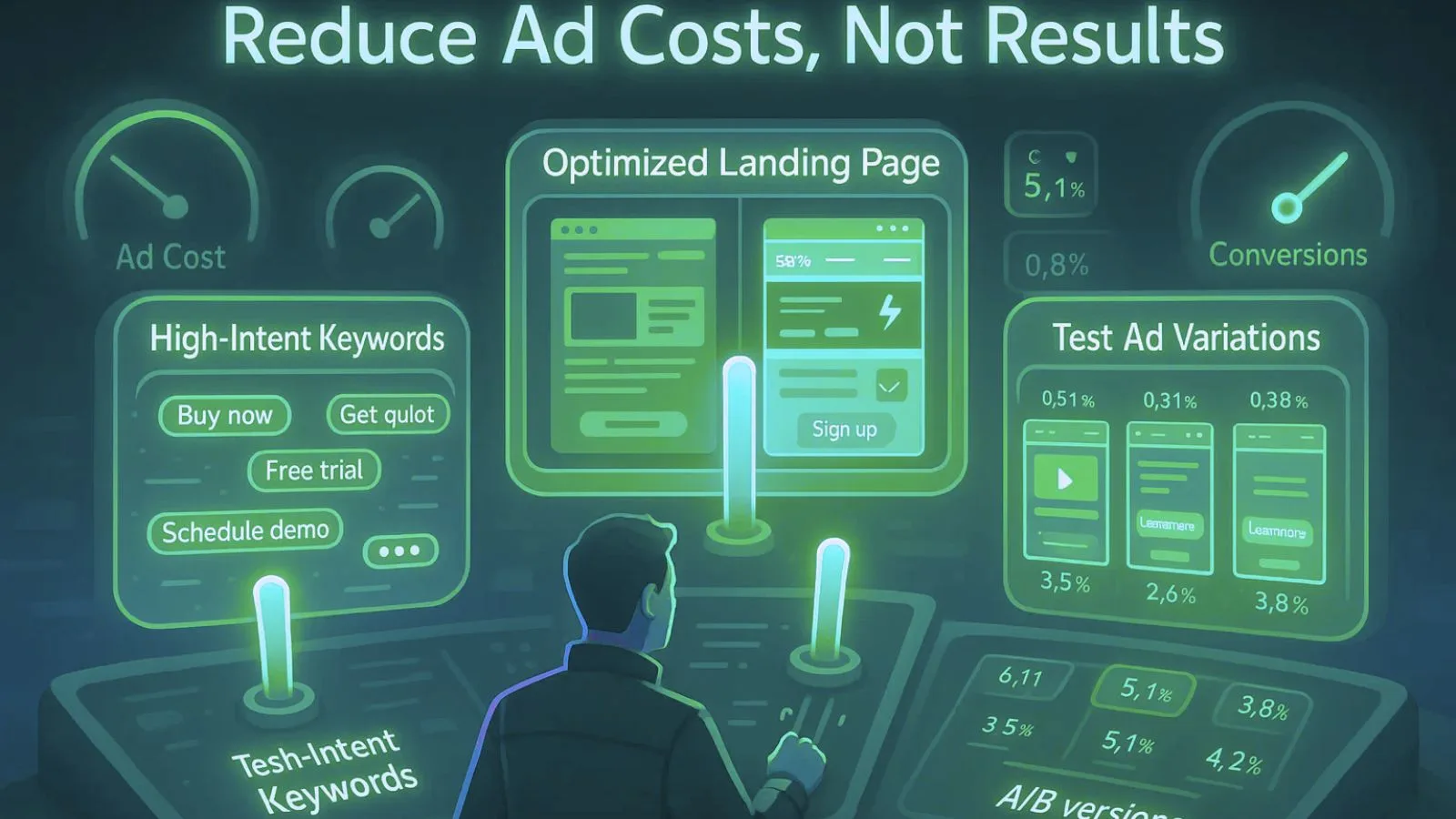
Cutting costs doesn’t mean cutting results. Here are a few simple ways to lower your Google Ads cost while keeping your conversions strong:
- Focus on High-Intent Keywords: Go for keywords that signal buyers, not just browsers.
- Optimize Landing Pages: Make sure your page matches the ad message. Better user experience = better Quality Score.
- Test Ad Variations: Try different headlines and CTAs to see what converts better.
- Use a Google Ad Spy Tool: Tools like PowerAdSpy help you spot what’s working in your niche so you don’t waste time or money guessing.
Conclusion: Plan Smarter, Spend Better
By now, you’ve probably realized there’s no single answer to the question, “How much do Google Ads cost?”. The cost depends on your industry, strategy, audience, and the tools you use. But what doesn’t change is the importance of planning smart and keeping a close eye on where your budget is going.
Using insights from tools like PowerAdSpy, setting daily limits, refining your targeting, and testing consistently can help you get the most out of every rupee spent.
In 2025, Google Ads cost is less about how much you spend and more about how wisely you spend it.
Frequently Asked Questions
1. How much do Google Ads cost for small businesses in 2025?
On average, small businesses spend anywhere between ₹5,000 to ₹50,000 per month on Google Ads. However, the actual Google Ads cost depends on your goals, industry, and how well your campaigns are optimized. Starting small and scaling gradually is often the best approach.
2. Can I calculate my expected Google Ads cost before launching a campaign?
Yes! Google offers an Ad cost calculator through its Keyword Planner tool. It helps you estimate costs based on keywords, location, and bidding strategy. You can also use tools like PowerAdSpy to see what others are spending in your niche.
3. Are Google Ads worth the cost?
When set up and managed properly, yes. Google Ads can deliver high-quality leads and sales at scale. Using a Google Ad Spy tool, refining your targeting, and consistently testing ad variations can help lower your Ad cost and boost ROI.

